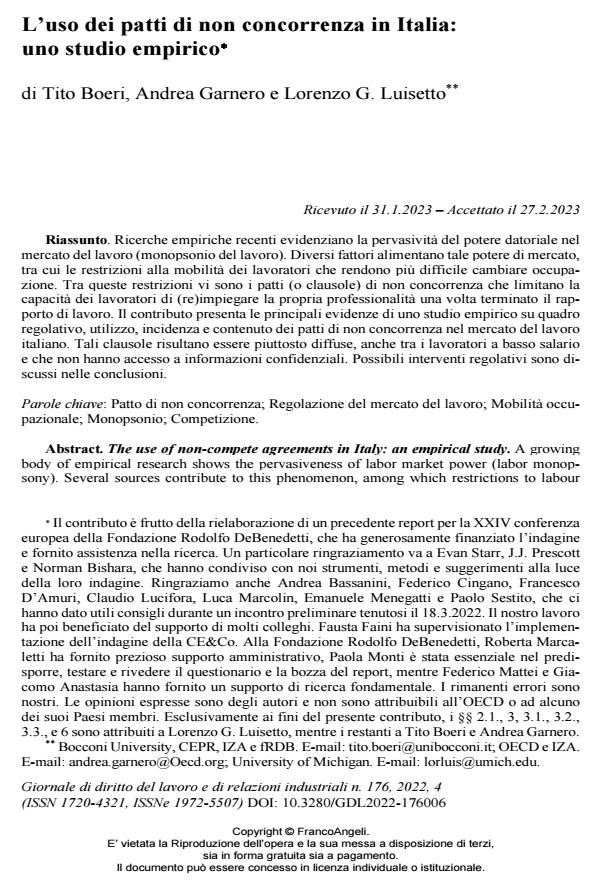The use of non-compete agreements in Italy: an empirical study
Journal title GIORNALE DI DIRITTO DEL LAVORO E DI RELAZIONI INDUSTRIALI
Author/s Tito Boeri, Andrea Garnero, Lorenzo G. Luisetto
Publishing Year 2023 Issue 2022/176
Language Italian Pages 35 P. 609-643 File size 435 KB
DOI 10.3280/GDL2022-176006
DOI is like a bar code for intellectual property: to have more infomation
click here
Below, you can see the article first page
If you want to buy this article in PDF format, you can do it, following the instructions to buy download credits

FrancoAngeli is member of Publishers International Linking Association, Inc (PILA), a not-for-profit association which run the CrossRef service enabling links to and from online scholarly content.
A growing body of empirical research shows the pervasiveness of labor market power (labor monopsony). Several sources contribute to this phenomenon, among which restrictions to la-bour mobility that reduce workers outside options. Non-compete agreements restrict employ-ees’ post-employment opportunities. This article presents the main findings of a first empirical study on the legal framework, use, incidence, and characteristics of non-compete agreements in the Italian labour market. In contrast to the traditional view, non-compete clauses are quite widespread even among low-wage workers who do not have access to confidential infor-mation. Potential policy measures are discussed in the conclusion.
Keywords: Non-compete agreements; Labour market regulation; Occupational mobility; Mo-nopsony; Competition.
Tito Boeri, Andrea Garnero, Lorenzo G. Luisetto, L’uso dei patti di non concorrenza in Italia: uno studio empirico in "GIORNALE DI DIRITTO DEL LAVORO E DI RELAZIONI INDUSTRIALI " 176/2022, pp 609-643, DOI: 10.3280/GDL2022-176006